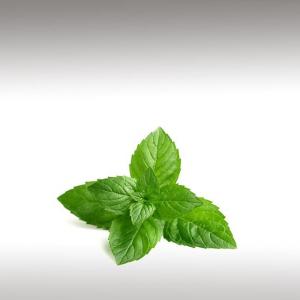
SPEARMINT ESSENTIAL OIL (MENTHA SPICATA) - ESSENTIAL OILS

BASE / GENERAL DATA
Information submited: April 17, 2015 Modified: April 22, 2018 By: OperaDreamhouse
Botanical Name: Mentha spicata
Common Method of Extraction: Steam Distilled
Part Typically Used: Leaves and Flowers/Buds
Color: Clear
Consistency: Thin
Perfumery Note: Top
Strength of Initial Aroma: Minty, slightly fruity aroma that is less bright than peppermint.
It has a similar aroma to that of Peppermint oil, but is slightly sweeter and is pale yellow to greenish in color. Unlike Peppermint, Spearmint does not contain high amounts of Menthol.
Spearmint plants were macerated and added to milk to lengthen the shelf life of milk.
Spearmint or Spear Mint (Mentha Spicata) is a species of mint native to much of Europe and Asia (Middle East, Himalayas, China), and naturalized in parts of northern and western Africa, North and South America, as well as various oceanic islands.
Other common names for Spearmint include Green Mint, Garden Mint, Fish Mint and Our Lady’s Mint.
It is aherbaceous, rhizomatous, perennial plant growing 30 - 100 cm tall, with variably hairless to hairy stems and foliage, and a wide - spreading fleshy underground rhizome. The leaves are 5 - 9 cm long and 1,5 - 3 cm broad, with a serrated margin. The stem is square - shaped, a trademark of the mint family of herbs.
Spearmint produces flowers in slender spikes, each flower pink or white, 2,5 - 3 mm long, and broad.
The herb grows easily under fertile, moist and loose soil conditions.
Spearmint oil is extracted by steam distillation. This involves using steam from boiling water to extract the essential oil from the plant. The heat from the steam causes the plant’s cell walls to open allowing the essential oil to be released.
During the Middle Ages, Spearmint leaves were scattered on the floors of public spaces to ward off rodents and to encourage general good health. The herb was also used to heal sore gums and to whiten teeth.
The Spearmint plant is native to Europe, but is now also cultivated across the United States and Asia. The state of Washington is currently one of the world's largest producers of Spearmint oil, whose most common use is as a flavor additive to toothpaste, chewing gums and candy.
Chemical structure:
A major component of the oil is R-carvone, pure R-carvone is sufficient to produce a smell which people identify as a Spearmint smell.
Common Method of Extraction: Steam Distilled
Part Typically Used: Leaves and Flowers/Buds
Color: Clear
Consistency: Thin
Perfumery Note: Top
Strength of Initial Aroma: Minty, slightly fruity aroma that is less bright than peppermint.
It has a similar aroma to that of Peppermint oil, but is slightly sweeter and is pale yellow to greenish in color. Unlike Peppermint, Spearmint does not contain high amounts of Menthol.
Spearmint plants were macerated and added to milk to lengthen the shelf life of milk.
Spearmint or Spear Mint (Mentha Spicata) is a species of mint native to much of Europe and Asia (Middle East, Himalayas, China), and naturalized in parts of northern and western Africa, North and South America, as well as various oceanic islands.
Other common names for Spearmint include Green Mint, Garden Mint, Fish Mint and Our Lady’s Mint.
It is aherbaceous, rhizomatous, perennial plant growing 30 - 100 cm tall, with variably hairless to hairy stems and foliage, and a wide - spreading fleshy underground rhizome. The leaves are 5 - 9 cm long and 1,5 - 3 cm broad, with a serrated margin. The stem is square - shaped, a trademark of the mint family of herbs.
Spearmint produces flowers in slender spikes, each flower pink or white, 2,5 - 3 mm long, and broad.
The herb grows easily under fertile, moist and loose soil conditions.
Spearmint oil is extracted by steam distillation. This involves using steam from boiling water to extract the essential oil from the plant. The heat from the steam causes the plant’s cell walls to open allowing the essential oil to be released.
During the Middle Ages, Spearmint leaves were scattered on the floors of public spaces to ward off rodents and to encourage general good health. The herb was also used to heal sore gums and to whiten teeth.
The Spearmint plant is native to Europe, but is now also cultivated across the United States and Asia. The state of Washington is currently one of the world's largest producers of Spearmint oil, whose most common use is as a flavor additive to toothpaste, chewing gums and candy.
Chemical structure:
A major component of the oil is R-carvone, pure R-carvone is sufficient to produce a smell which people identify as a Spearmint smell.

SPIRITUAL PRACTISES DATA

MEDICINE / HEALTH DATA

BEAUTY / COSMETICS DATA

FOOD / COOKING DATA
COMMENTS
No comments.


